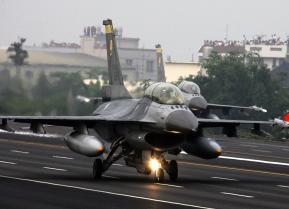The Nightmare Scenario: Imagine if China Tried to Invade Taiwan
The PLA is now better equipped than it ever has been to launch a military invasion of Taiwan. This “nightmare” scenario is a looming threat to Taiwan’s continued existence as an independent and sovereign state.
Taiwan’s ODC is still a concept, not a strategy. When developing a defense strategy, and determining military investments and procurements, it is critical to get the ratio of traditional force capabilities to asymmetric capabilities correct. In the United States, different viewpoints exist regarding the role U.S. forces would play in ensuring Taiwan’s defense, as well as on the amount of traditional force capabilities Taiwan should acquire. Taiwan’s defense planners are tasked with a tremendous responsibility. Taiwan’s position relative to China is inherently asymmetric. As such, Taipei could seek to adopt a more guerilla-like posture and acquire certain ground-based “fire and forget” weapons. Adopting a more asymmetric posture requires strengthening Taiwan’s ground forces and investing into more mobile artillery capable of destroying PLA amphibious assault ships and landing crafts.
It could be difficult for the people of Taiwan to support a dramatic shift toward a guerilla-like defense force. It seems likely that Taiwan’s civilian leadership and military brass will elect to pursue a strategy that addresses the short and long-term threats to national sovereignty. Operational concepts like the ODC can help Taiwan evolve its traditional force structures. Focusing too heavily on asymmetry and guerilla-like forces, however, could leave Taiwan with a dearth of capabilities to deter a full-scale war with the PRC.
Implications
- A Chinese invasion of Taiwan would be multi-faceted. Beijing would likely utilize the following: information warfare, missile strikes, blockades, air operations, cyber attacks, and, ultimately, amphibious landings.
- PLA modernization has specifically targeted Taiwan. It is imperative for Washington and Taipei to continually discuss and advance Taiwan’s defense options. Time may prove to be the critical limiting factor. Not enough has been done to adequately prepare for a Chinese invasion of Taiwan.
- The U.S. could elect to take a more proactive approach to ensuring Taiwan’s security. Whether it does may depend on how the defense of Taiwan is viewed. Are Taiwan’s democracy and the continuation of regional peace critical U.S. national interests? Or is the prevention of cross-Strait conflict something that Washington can afford to take for granted? Whatever the answer may be, Taiwan’s government has the foremost responsibility to protect its people’s freedom.
- The ROC ground forces will play a critical role in any invasion scenario. Ground forces are the last line of defense. They require increased training and greater investment in munitions.
- Taiwan’s defense strategy must appropriately and effectively balance investment in asymmetrical capabilities and traditional force capabilities. Determining the correct balance is pivotal to Taiwan’s continued survival as an independent, sovereign state.
Alex Bierman is an Intern at the Project 2049 Institute (where this first appeared). He is currently a M.A. candidate for Security Policy Studies at the George Washington University (GWU), concentrating in Asian Regional Security and Cyber Security.


